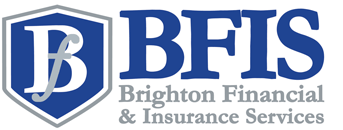California Wildfire Season: Preparing Your Business with the Right Insurance
See How We're Different
or call us: 888-412-7630

By: Vernon Williams | Commercial Agency Advisor & Principal
888-412-7630 | vwilliams@thebrightonfinancial.com
As the climate continues to change, California faces increasing threats from wildfires. Businesses operating in this region must be proactive about safeguarding their assets and operations. One of the most effective ways to protect your business from the devastating impact of wildfires is through the right insurance coverage. This article will guide you through understanding the risks, the importance of insurance, and how to prepare your business effectively for the wildfire season.
Understanding the Risks of California Wildfire Season
California’s wildfire season is becoming longer and more intense due to factors such as drought, high temperatures, and strong winds. Understanding these risks is essential for any business owner in this region.
The Impact of Wildfires on Businesses
Wildfires not only destroy property but can also disrupt operations for extended periods. Businesses located in high-risk areas might face physical damage to facilities, loss of inventory, and interruption of services. The financial implications can be staggering, often resulting in thousands of dollars in losses.
Moreover, wildfires can lead to a decline in customer footfall, particularly for companies reliant on in-person sales. Reputation can also suffer, particularly if customers perceive a business to be unprepared or neglectful in the face of disaster. In addition to immediate financial losses, businesses may also incur long-term costs associated with recovery and rebuilding, which can include increased insurance premiums, legal fees, and the potential loss of key employees who may seek opportunities elsewhere due to instability.
Furthermore, the psychological impact of wildfires should not be overlooked. Employees may experience stress and anxiety related to their safety and the safety of their families, which can affect productivity and morale. Businesses that prioritize mental health support during these challenging times can foster a more resilient workforce, ultimately aiding in recovery efforts.
Predicting Wildfire Season: What the Experts Say
Experts have noted that predicting wildfire seasons involves monitoring specific weather patterns and ecological conditions. Various organizations, including Cal Fire and the National Interagency Fire Center, forecast rainy seasons, temperature fluctuations, and vegetation growth levels to estimate the risk of wildfires.
Keeping abreast of expert predictions can aid businesses in strategic planning and preparation. Owners should regularly review updated forecasts and heed warnings to mitigate risks effectively. Additionally, investing in technology that provides real-time alerts about fire danger levels can be a game-changer for businesses. This proactive approach allows companies to implement safety protocols, such as evacuating staff or securing assets, before a fire threatens their operations.
Moreover, businesses can benefit from engaging with local community resources, such as fire departments and emergency management agencies, to develop comprehensive emergency response plans. By collaborating with these organizations, businesses can not only enhance their preparedness but also contribute to the overall resilience of their communities in the face of wildfire threats. This collaborative spirit can foster a sense of solidarity and shared responsibility, which is crucial during such challenging times.
The Importance of Business Insurance in Wildfire Season
Business insurance is a critical component of risk management during wildfire season. An effective insurance policy can help mitigate financial losses and provide support for recovery after a disaster.
Types of Business Insurance for Wildfire Protection
Several types of insurance can offer protection against wildfires, including property insurance, business interruption insurance, and liability insurance.
- Property Insurance: This covers physical assets such as buildings, equipment, and inventory.
- Business Interruption Insurance: Offers compensation for lost revenue due to business disruptions caused by wildfires.
- Liability Insurance: Protects against legal claims arising from damages caused by fires originating from your business premises.
Understanding the coverage options allows business owners to tailor their policies to their specific risks, ensuring comprehensive protection. Additionally, it is crucial for business owners to regularly review and update their policies to reflect any changes in their operations or the value of their assets, especially in areas prone to wildfires. This proactive approach can help ensure that they are not underinsured when disaster strikes.
How Insurance Can Help Your Business Recover
After a wildfire, the recovery process can be overwhelming. Insurance plays a vital role in helping businesses recover by providing the necessary funds for repairs and rebuilding. A well-structured policy can facilitate a quicker return to normalcy, minimizing downtime and associated losses.
In addition, insurance policies can cover temporary relocation costs and salaries during recovery periods, ensuring that businesses maintain their workforce and operational capability during the difficult transition. Furthermore, many insurance providers offer additional services, such as risk assessment and disaster recovery planning, which can be invaluable in preparing for future wildfire seasons. By working closely with their insurers, business owners can develop strategies that not only protect their assets but also enhance their resilience against potential threats, allowing them to emerge stronger post-disaster.
Evaluating Your Current Business Insurance Policy
Taking the time to review your existing insurance coverage is critical in ensuring you are prepared for the wildfire season. Frequent evaluations can help you identify potential gaps in coverage and adjust your policies accordingly. This proactive approach not only protects your assets but also enhances your business's resilience in the face of natural disasters.
Identifying Gaps in Your Coverage
As businesses evolve, their insurance needs change. It is essential to assess whether your current policy adequately covers your assets, particularly in relation to wildfire risks. A comprehensive review should include an inventory of all physical assets, including buildings, machinery, and inventory, to ensure everything is accounted for in your coverage.
Review all exclusions or limitations in your policy. For instance, some policies may not cover wildfires due to geographical restrictions. Identify aspects of your business that may be inadequately protected, such as outdoor inventory or business interruption scenarios. Additionally, consider the impact of smoke damage, which can affect properties even miles away from a wildfire. Understanding these nuances can help you make informed decisions about your coverage needs.
Adjusting Your Policy for Wildfire Risks
Once you have identified gaps, consider adjusting your policy to align with your specific risks. This may involve increasing coverage limits, adding specific wildfire-related options, or consulting with an insurance advisor to navigate your options effectively. It’s also wise to evaluate the claims process outlined in your policy; knowing how to file a claim efficiently can save you valuable time and resources during a crisis.
Additional riders or endorsements for wildfire causation can provide further security and peace of mind, ensuring your business is adequately covered in the event of a disaster. Furthermore, investing in risk mitigation strategies, such as creating defensible space around your property or implementing fire-resistant materials in your infrastructure, can not only enhance your safety but may also lower your premiums. Engaging with local fire safety programs can provide additional resources and support, making your business more resilient against the threat of wildfires.
Choosing the Right Insurance Provider
Finding the right insurance provider is crucial for effective coverage, particularly when facing natural disasters such as wildfires. Look for providers with experience in your industry and a strong understanding of California’s wildfire risks. This is especially important as wildfires have become increasingly frequent and severe, making it essential to have an insurer that not only understands these risks but also has a proven track record of supporting clients through the aftermath of such events.
What to Look for in an Insurance Provider
When choosing an insurance provider, consider their reputation, reliability, and customer service. Look for companies known for their responsiveness, particularly during claims processes. Ratings from industry professionals and customer reviews can provide invaluable insights into a provider's track record. Additionally, you may want to explore their online presence and social media engagement, as these platforms can offer real-time feedback from current policyholders regarding their experiences and satisfaction levels.
Additionally, evaluate the financial strength of the insurer. A company with robust financial health is better positioned to fulfill claims in the aftermath of a disaster. You can check ratings from independent agencies such as A.M. Best or Standard & Poor's, which assess the financial stability of insurance companies. A strong rating not only indicates reliability but also gives you peace of mind knowing that your provider can withstand economic fluctuations and still meet its obligations to policyholders.
Questions to Ask Potential Providers
Before finalizing your choice of an insurance provider, ask specific questions to ascertain their suitability. Consider inquiring about:
- Their experience with wildfire-related claims
- Coverage options specific to your industry
- Average claims processing time
- Discounts or incentives for implementing safety measures
Getting clear answers to these questions can help you make an informed decision, ensuring that you select the right partner to protect your business. Furthermore, it may be beneficial to ask about their claims support resources, such as whether they provide a dedicated claims adjuster or a 24/7 hotline for emergencies. Understanding how they handle claims can give you insight into their commitment to customer service and their ability to support you when you need it most.
Lastly, consider the flexibility of their policies. As your business evolves, your insurance needs may change, and having a provider that can adapt to those changes is invaluable. Inquire about the ease of modifying coverage, adding endorsements, or adjusting limits as your operations grow or shift. A proactive insurance provider will not only help you navigate the complexities of coverage but will also be a strategic partner in safeguarding your business against unforeseen risks.
Preparing Your Business for Wildfire Season
Being proactive about preparation can make a significant difference in reducing risk during wildfire season. Developing a comprehensive strategy involves planning, asset protection, and ensuring continuity.
Creating a Disaster Preparedness Plan
A well-structured disaster preparedness plan is essential for effectively navigating wildfire threats. This plan should outline clear procedures for communication, evacuation, and recovery.
Include contact information for local emergency services, employees, and stakeholders. Conduct regular drills to ensure that everyone is familiar with the plan, helping to build confidence and reduce panic during actual events. Additionally, consider designating a crisis management team responsible for overseeing the execution of the plan. This team can facilitate training sessions, manage resources, and serve as the point of contact for external agencies, ensuring that your business is not only prepared but also well-coordinated in times of crisis.
Protecting Your Physical Assets
Preventative measures can help safeguard your physical assets against wildfire damage. This includes the installation of fire-resistant building materials and maintaining defensible space around your property.
Regular property maintenance, such as clearing brush and dead vegetation, can also reduce risks. Consider investing in fire alarms, automatic fire detection systems, and sprinkler systems to further enhance safety. Moreover, it may be beneficial to conduct a thorough risk assessment of your property to identify vulnerable areas and implement targeted improvements. Engaging with local fire departments for advice on best practices and participating in community fire prevention programs can also provide valuable insights and resources to bolster your protective measures.
Ensuring Business Continuity During Wildfires
Preparing for business continuity is crucial during wildfire season. Consider alternatives for remote operations and implement strategies that enable your workforce to stay productive, regardless of physical location.
Utilizing cloud-based services and ensuring that data backups are secure and accessible can support ongoing operations and facilitate recovery. Additionally, establishing a communication plan that includes regular updates to employees about the status of operations and safety measures can help maintain morale and clarity. It’s also wise to explore partnerships with other local businesses for resource sharing, which can provide mutual support during emergencies. This collaborative approach not only strengthens individual business resilience but also fosters a sense of community solidarity in the face of natural disasters.
Navigating the Claims Process After a Wildfire
In the aftermath of a wildfire, navigating the claims process can be daunting. A thorough understanding of the steps involved can facilitate a smoother experience.
Documenting Damage for Your Claim
Accurate documentation is essential for filing a claim. Take photographs and make detailed lists of damaged assets, including descriptions, costs, and replacements. Having comprehensive evidence can support your claim and expedite the approval process. Additionally, it's beneficial to keep receipts for any immediate expenses incurred due to the wildfire, such as temporary housing or emergency repairs. These documents can provide further proof of your losses and help substantiate your claim, ensuring you are compensated for all necessary expenses.
Understanding the Claims Timeline
Familiarize yourself with the expected timeline for your claims process. Generally, insurers will initiate assessment processes depending on the extent of damage and the number of claims submitted following significant wildfire events. It’s important to note that during peak wildfire seasons, the volume of claims may lead to delays in processing. Understanding this can help set realistic expectations and reduce frustration. Regularly check in with your claims representative to stay updated on the status of your claim, and don’t hesitate to ask for clarification on any part of the process that seems unclear.
Staying in close communication with your insurer can help keep your claim moving forward and clarify any queries or additional documentation requested. This proactive approach not only demonstrates your commitment to resolving the claim but also allows you to address any potential issues before they escalate.
Getting the Most from Your Insurance Payout
To maximize your insurance payout, ensure your documentation is thorough and accurate. Be prepared to negotiate with your insurer and provide any additional information they may require. It can also be advantageous to familiarize yourself with your policy details, including coverage limits and exclusions, so you can effectively advocate for your needs. Understanding the nuances of your insurance policy can empower you during discussions with your insurer and help you identify areas where you may be entitled to more compensation.
Consider consulting with a claims adjuster if needed. Their expertise can help navigate complexities in your claim and ensure that you receive fair compensation for your losses. Additionally, they can assist in interpreting the fine print of your policy, which can often be overwhelming for policyholders. Engaging a professional can provide peace of mind and allow you to focus on recovery while ensuring that your interests are well-represented throughout the claims process.
In conclusion, the California wildfire season presents significant risks to businesses. By understanding these risks, emphasizing the importance of comprehensive insurance, and preparing systematically, business owners can safeguard their assets and operations. Proactive measures, insurance reviews, and effective claims navigation are all vital for resilience in the face of wildfires.
Request A Quote
Get Started Today!
We'll Reply in 15min or less*
Contact Us
*Response time varies based on hours of operation













